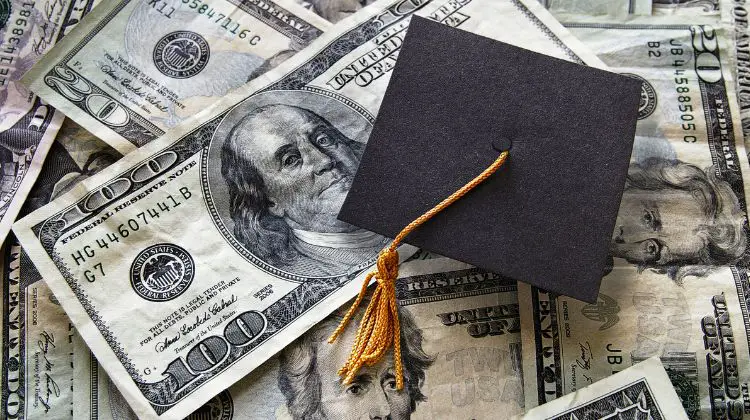You see the headlines about college tuition and probably feel your stomach drop. An Ivy League school can seem like a fantasy, something reserved for the ultra-wealthy. That sticker price looks more like a down payment on a house than a year of a college education.
But that picture is starting to change, and it’s great news for many families. Some of the most prestigious schools in the country are opening their doors wider than ever. You’ll learn how Ivy League schools expand financial aid for low income students and what this shift could mean for you.
This isn’t just a small tweak to a few programs. We are talking about a significant movement where an Ivy League school will expand its aid, making a top-tier education much more affordable for undergraduate students with outstanding promise.
Table of Contents:
- The Shocking Price Tag of a Top Education
- How Ivy League Schools Expand Financial Aid for Low Income Students
- Are Other Top Schools Following This Trend?
- So, Why Is This Happening Now?
- What This All Means For You and Your Family
- Conclusion
The Shocking Price Tag of a Top Education
Let’s not sugarcoat it; the cost of higher education has soared. For top private universities, the total cost can be jaw-dropping. This price often includes much more than just classes, covering a wide range of billed expenses.
The “cost of attendance” is the big number you need to watch, but not the one that should deter you. It covers billed expenses including tuition, housing, food plans, books, and even personal expenses and mandatory health insurance. For example, Princeton University estimates its total cost at over $91,000 for a single academic year, while Harvard University lists a similar comprehensive figure.
Seeing a figure like that can make anyone feel like giving up before they even start. Many talented students don’t even bother to apply to a league school, assuming it’s completely out of financial reach. But that’s the number you should not focus on, as generous financial aid packages change the entire equation.
How Ivy League Schools Expand Financial Aid for Low Income Students
Here’s where the story gets exciting. Princeton recently announced a massive expansion of its financial aid program. This move is a game-changer for many American families across different family income levels.
The university’s new policy is incredibly generous and is made to remove cost as a barrier for admission. The changes target not just low-income families but also middle-income households, which widens the financial reach of the institution. It shows a real university’s commitment to economic diversity on campus, bringing people from all backgrounds together.
Let’s look at the specifics of Princeton’s new plan, which represents a significant enhancement to its aid packages.
| Family Income Level | Princeton Financial Aid Details |
|---|---|
| Up to $100,000 per year | The financial aid package covers full billed expenses, including tuition, room, board, and personal expenses. |
| Up to $150,000 per year | Many families in this bracket still qualify for aid that covers the full cost of tuition, room, and board. |
| Up to $300,000 per year | Families receive significant grant aid to reduce the cost substantially, with most paying no tuition. |
This plan makes a Princeton education effectively free for most students from families earning up to $100,000, offering essentially free tuition. It’s a powerful statement that your family’s financial circumstances shouldn’t dictate your future. This new financial aid program is a clear signal of the university’s direction.
Are Other Top Schools Following This Trend?
Princeton is making waves, but it’s not the only school making big moves. Many other top institutions have robust financial aid programs, a trend that has been building for years. The goal is to ensure students who receive aid can attend without undue financial stress.
Most of these top-tier schools have what are called “need-based” aid policies. This means they look at your family’s financial situation to figure out how much you can afford to pay. The school then provides a financial aid package to cover the rest, often with grants instead of loans.
Harvard’s Financial Aid Initiative
Harvard University has long been a leader in financial aid. For years, the university has promised that cost will not be a barrier for any admitted student to Harvard College. The Harvard College’s financial aid program is a testament to that promise.
Under Harvard College’s financial aid initiative, families with annual family incomes below $85,000 are not expected to contribute anything toward the cost of attendance. For families earning between $85,000 and $150,000, the contribution is typically between zero and 10 percent of their income. This generous financial aid makes a Harvard education surprisingly affordable for many admitted students.
This commitment means the aid Harvard provides goes beyond just tuition. The financial aid cover also helps with expenses like travel costs and health insurance, ensuring students can fully participate in college life. Harvard also offers a $2,000 start-up grant to students with the greatest financial need to help with move-in and other initial expenses.
Yale’s Commitment to Affordability
Yale is another Ivy League school dedicated to need-based financial help. The university calculates a parent contribution based on income and assets, and like its peers, is committed to meeting 100% of demonstrated need for all undergraduate students. Yale then provides a financial aid award to meet that need without requiring students to take out loans.
Like Harvard, Yale promises that families earning less than $75,000 with typical assets pay nothing. A significant portion of the student body receives financial aid, allowing them to focus on their studies. As a result, many students graduate from Yale with zero student loan debt, a major advantage as they start their careers.
Aid Programs at Penn, Brown, Columbia, and More
The commitment to affordability extends across the entire Ivy League. The University of Pennsylvania, Brown University, Columbia University, Dartmouth College, and Cornell University all have similar no-loan policies. They are committed to meeting the full demonstrated need of their students, ensuring anyone who is admitted can afford to attend.
This means if you get in, they will work to make sure you can afford to go. The help is primarily given through grants, which are like scholarships that you don’t have to pay back. This approach helps students start their careers on solid financial footing, a key part of the university’s commitment to student success.
These generous aid packages are a clear signal that these schools want the best students, regardless of their financial background. They understand that talent is not limited to just wealthy families. The aim is to create a community of individuals with tremendous potential.
So, Why Is This Happening Now?
You might be wondering what’s behind this wave of generosity. Is it purely good will? The reasons are a mix of financial strength, public pressure, and strategic thinking about the future of higher education.
The Power of University Endowments
Ivy League schools are incredibly wealthy. They sit on massive endowments, which are huge pools of donated money that are invested to generate returns. These endowments are worth billions of dollars and provide a stable funding source independent of tuition revenue.
For example, Harvard’s endowment is the largest in the country, valued at over $50 billion, while Princeton’s endowment is valued at over $34 billion. The investment returns on these funds are more than enough to cover generous financial aid packages. Schools are now choosing to use a larger portion of this wealth to make education more accessible and reduce reliance on federal funding cuts.
Rising Social and Political Pressure
Universities are also responding to public and political pressure. For years, politicians have questioned why these wealthy institutions with tax-exempt status weren’t doing more to lower costs for students. There have been threats of new taxes on large endowments if schools don’t increase spending on their core educational mission.
Expanding the financial aid program is a direct response to this pressure, demonstrating a commitment to public service. Harvard University President Alan M. Garber has spoken on the importance of this mission. By spending more on students, universities showcase their public benefit and reinforce their value in the eyes of the public and policymakers.
Building a More Diverse Student Body
Finally, these schools are doing this for a very practical reason. They want the best and brightest students from all walks of life. A diverse student body enriches the educational experience for everyone and is central to the mission of higher education.
As Princeton President Christopher L. Eisgruber noted, “By bringing people from all backgrounds together, we enhance the learning environment for everyone.” When students from different economic situations come together, they bring different perspectives. This creates a more dynamic learning environment where ideas are challenged and understanding grows.
Following recent court decisions on college admissions, economic diversity has become an even greater focus. These aid programs are a powerful tool for building a class of students with a wide range of life experiences and talents. The goal is to admit individuals who have shown outstanding promise, no matter their family income.
What This All Means For You and Your Family
So, what’s the big takeaway from all of this? The message is simple: don’t let the sticker price scare you away. An Ivy League education may be more within your reach than you think.
Look Beyond the Sticker Price
The single most important thing to remember is that almost nobody pays the full advertised price. Your focus should be on the “net price,” which is what you’ll actually pay after grants and scholarships are subtracted from the total cost. Every league school website has a Net Price Calculator you can use.
These tools give you a personalized estimate of what you might have to pay based on your family’s specific financial circumstances. Playing around with these calculators can give you a much more realistic view of your options. You might be very surprised by the results and how affordable an Ivy League school can be.
Prepare for the Application Process
To get this financial aid, you have to apply for it. This involves filling out some forms, mainly the Free Application for Federal Student Aid (FAFSA). Many private schools also ask for the CSS Profile, which is a more detailed financial form that allows the college’s financial aid staff to get a clearer picture of your situation.
Yes, it’s more paperwork, but the potential payoff is enormous. When you fill out these forms, be careful with every field and checkbox label to ensure the information is accurate. The financial aid staff work personally with families to understand each family’s specific needs, and providing correct information is the first step.
These institutions’ websites also have a privacy policy that explains how your sensitive financial data is handled. Don’t hesitate to reach out to the financial aid office; the aid staff work personally with applicants to navigate the process. This personalized support can make a huge difference, and some schools even offer a launch grant or start-up grant for initial costs.
A Path to a Debt-Free Degree
The rise of these generous aid packages opens up an incredible possibility. Graduating from one of the best universities in the world with little or no student loan debt is now a reality for many students who receive financial aid. This gives young graduates the freedom to pursue their passions without a heavy financial burden following them after graduation.
Instead of worrying about monthly loan payments by their junior year, students can focus on building a career, starting a business, or going to graduate school. This is a life-changing opportunity that completely alters the calculation of whether a top-tier education is “worth it.” It ensures that a college education is an investment in your future, not a liability.
If you found this information helpful, please share article with friends and family who might benefit. A quick facebook share could open a door for someone you know.
Conclusion
The landscape of college admissions and affordability is shifting for the better. The idea that an elite education is only for the elite is being challenged by these institutions themselves. It is a very hopeful time for bright students from all financial backgrounds.
As Ivy League schools expand financial aid for low income students, they are sending a clear message. Your talent and hard work matter more than your family’s bank account. This change, driven by a commitment to diversity and accessibility, is making the American dream a little more attainable for the next generation.








Reader Interactions